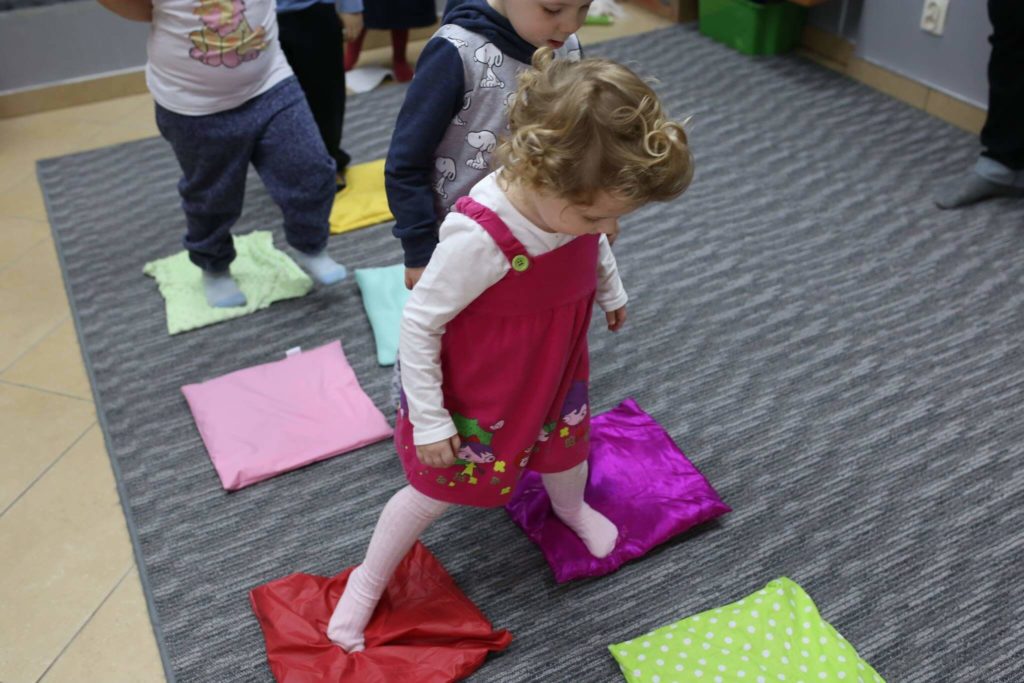
Sensory integration is the ability to receive, perceive, comprehend and appropriately organize sensory stimuli. This, as a result, affects the ability to learn and gain knowledge about the world. It is based on the functioning of three systems: touch system, vestibular system and proprioceptive system, which is responsible for the so-called deep sensation. Thus, we are able to recognize objects based on our touch and maintain balance of our bodies. Dysfunctions occur as a result of failure of those systems. They can be diagnosed already during childhood. The little one suffers from hypersensitivity or too low sensitivity as well as problems with coordination and delayed motor function. Furthermore, the child experiences problems with learning, speech and language skills. These are the most important symptoms of sensory integration disorders.
Sensory integration therapy
The symptoms mentioned, can be alleviated by appropriate therapy, often referred to as “learning fun”. This tells a great deal about the character of this treatment. It is based on activities that are useful for the child’s health and are pleasant at the same time, such as: swinging in a hammock, balancing in a crib or riding on a skateboard. This allows the child to improve their sensory integration and allows the little one to acquire numerous skills, such as reading and riding a bicycle. Therefore, the therapy is not learning itself, but rather constitutes a preparation towards learning by means of having fun.
Sensory path – help during therapy
During the treatment, numerous tools are used with an aim to support therapy. One of such tools is the sensory path – an indispensable element that can be found in each therapeutic office. It is good to have a sensory path at home as well, especially if there are children with sensory integration disorders. It can serve as an effective support for the whole therapy process and provide help in motor development as well as improve a child’s physical condition. It will ensure the regularity of exercise. This, as a result, will bring forth, guarantee better effects of the therapy, and ensure that the child has a lot of fun on an everyday basis.
Building a sensory path
Sensory paths are built out of several elements that can be arranged in different configurations. They are made out of materials with different textures, i.e. jeans, polar fleece, cotton and suede. They are filled with objects with different structure, shape and size including pine cones, beans, glass beads and chestnuts. Sometimes, parents build sensory paths on their own based on the example of the specialist paths found in therapeutic offices. However, in order to be sure of their proper functioning and effects, it is best to acquire a ready-to-use product. Thanks to such a product, the child will learn to recognize many and various surfaces as well as grow accustomed to them. Furthermore, the child’s reactions will indicate its touch preferences. A little one with very low sensitivity will select elements with big, hard filling while a child with hypersensitivity will decide in favor of soft and delicate fillings.
Functions of a sensory path
Sensory path, due to its diverse construction, helps to alleviate and prevent dysfunctions that appear in two of the brain’s data processing areas as indicated by scientists: perception and response. Disorders that take part in the first area are manifested by weak reactions towards touch. Disorders typical for the second area include: clumsiness, problems with motor skills, balance and coordination.
Playing on a sensory path contributes by improving the body’s physical condition – the so-called fine motor skills – that can be defined by activities that require sight and motor coordination such as swimming, hopscotch or playing ball. A sensory path stimulates the proper function of receptors located in the skin and muscles of both feet and hands. Thus, children receive more touch sensations while the scope of sensory experiences continues to grow. As a result, children expand their knowledge on the surrounding world.

